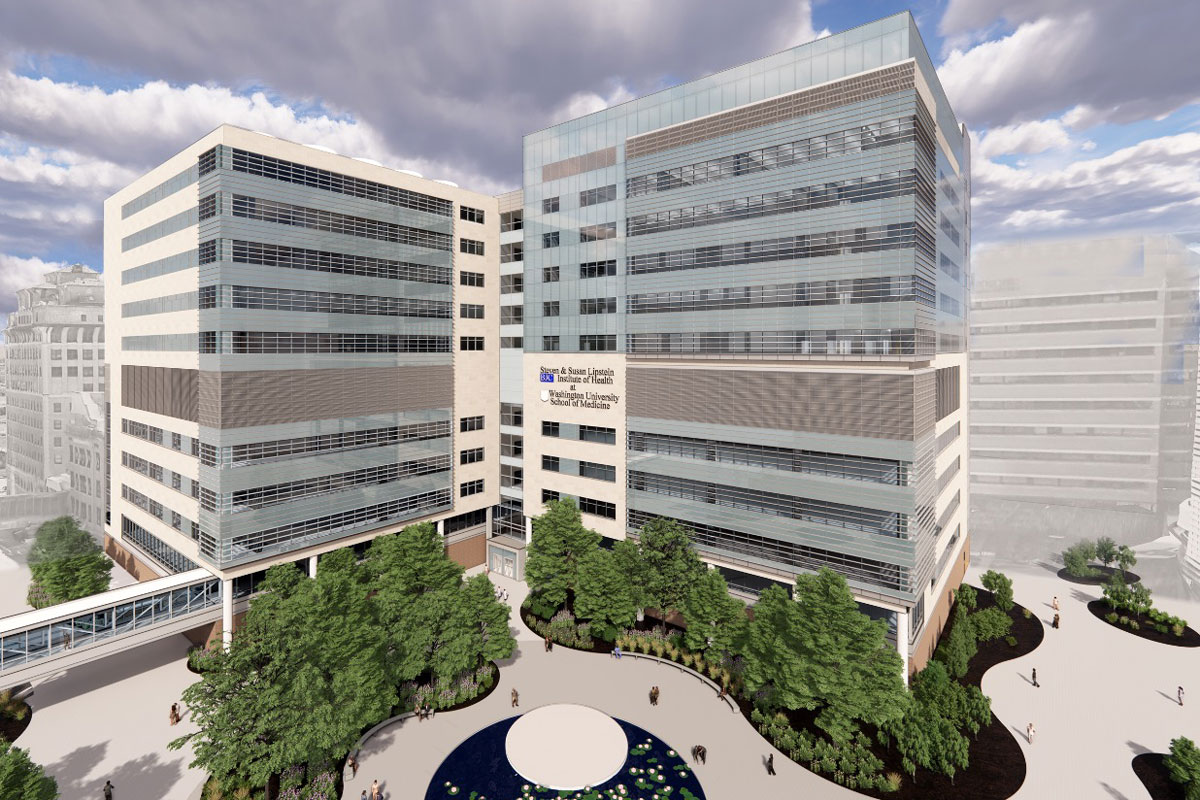BJC Institute of Health

The 680,000 square-foot Steven & Susan Lipstein BJC Institute of Health (BJCIH) at Washington University School of Medicine is an 11-story research building housing laboratories and research support facilities. The $235 million building, supported by a $30 million naming gift from BJC HealthCare, opened in December 2009. It is Washington University’s largest building.
In December 2021, the university announced a six-floor expansion on top of the BJC Institute of Health building. The addition will include 160,000 square feet of state-of-the-art laboratory space. It will house a 7,900-square-foot biosafety level 3 (BSL-3), or high-containment, laboratory to support research on dangerous pathogens such as the tuberculosis bacterium and SARS-CoV-2, the virus that causes COVID-19.
Designed and built to be environmentally sustainable, the BJC Institute of Health attained Gold Leadership in Energy and Environmental Design (LEED) certification. Sustainable construction processes and building features include a pollution prevention plan, water-efficient landscaping, an optimized energy performance plan, use of recycled and local building materials, use of low-emitting materials, increased ventilation and outdoor air delivery monitoring.
The building faces The Ellen S. Clark Hope Plaza, designed by world-renowned artist Maya Lin. Creation of the plaza was made possible by the generosity of many donors, including Robert G. and Ellen Clark, longtime friends of Washington University. The plaza is named for Ellen Clark, who passed away March 16, 2010.



